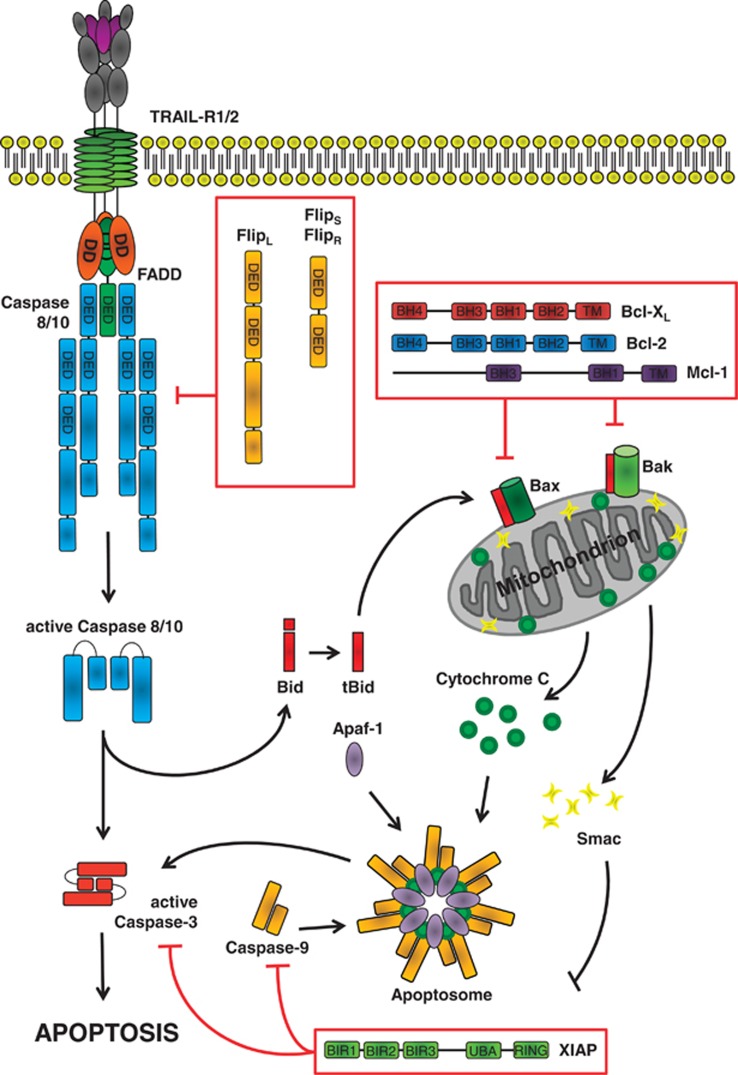Figure 3.
TRAIL-induced apoptosis. In type-I cells, DISC-activated caspase-8 is sufficient to directly cleave and activate the downstream effector caspase-3. In type-II cells, activation of the mitochondrial apoptosis pathway, mediated by caspase-8-dependent cleavage of Bid, is required to achieve effector caspase activation. Truncated Bid (tBid) translocates to the mitochondria where it induces Bax/Bak-mediated mitochondrial outer membrane permeabilization (MOMP). MOMP releases pro-apoptotic factors such as cytochrome-c and Smac/DIABLO into the cytosol. Cytosolic cytochrome-c aggregates with Apaf-1 and procaspase-9 to form the apoptosome, the activation platform for caspase-9. Active caspase-9 cleaves, and thereby activates, downstream effector caspases including caspase-3. The TRAIL-induced apoptosis cascade is inhibited at various levels: (i) at the DISC, cFLIP competes with caspase-8 for binding to FADD; (ii) at the mitochondria, anti-apoptotic Bcl-2 family members like Bcl-2, Bcl-xL and Mcl-1 inhibit pro-apoptotic Bax- and Bak-mediated MOMP and (iii) at the level of effector caspases, XIAP inhibits them by direct interaction. Hence, together with the extent of DISC-generated caspase-8 activity, the ratio of the expression of caspase-3 to XIAP is crucial for categorization of a particular cell line as type-I or type-II

